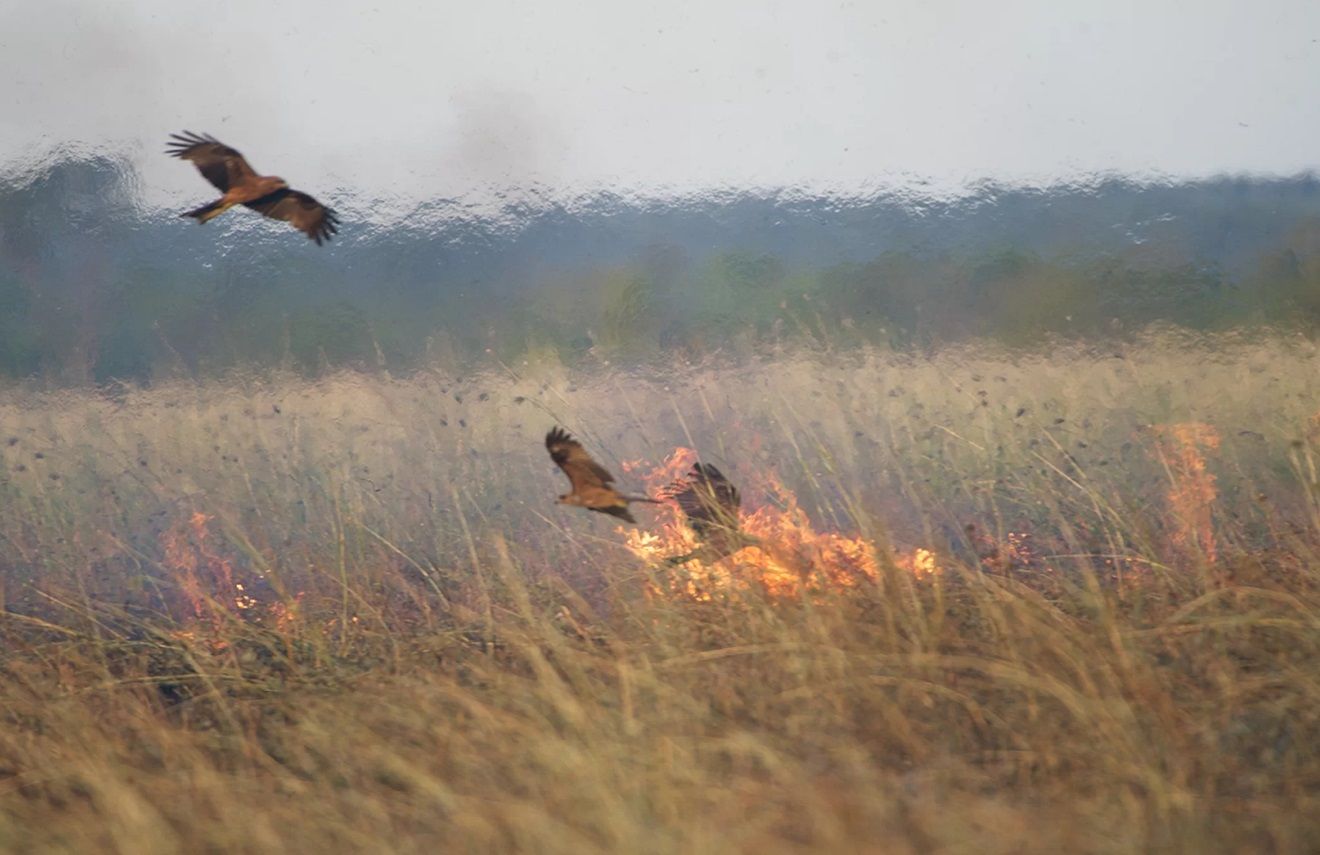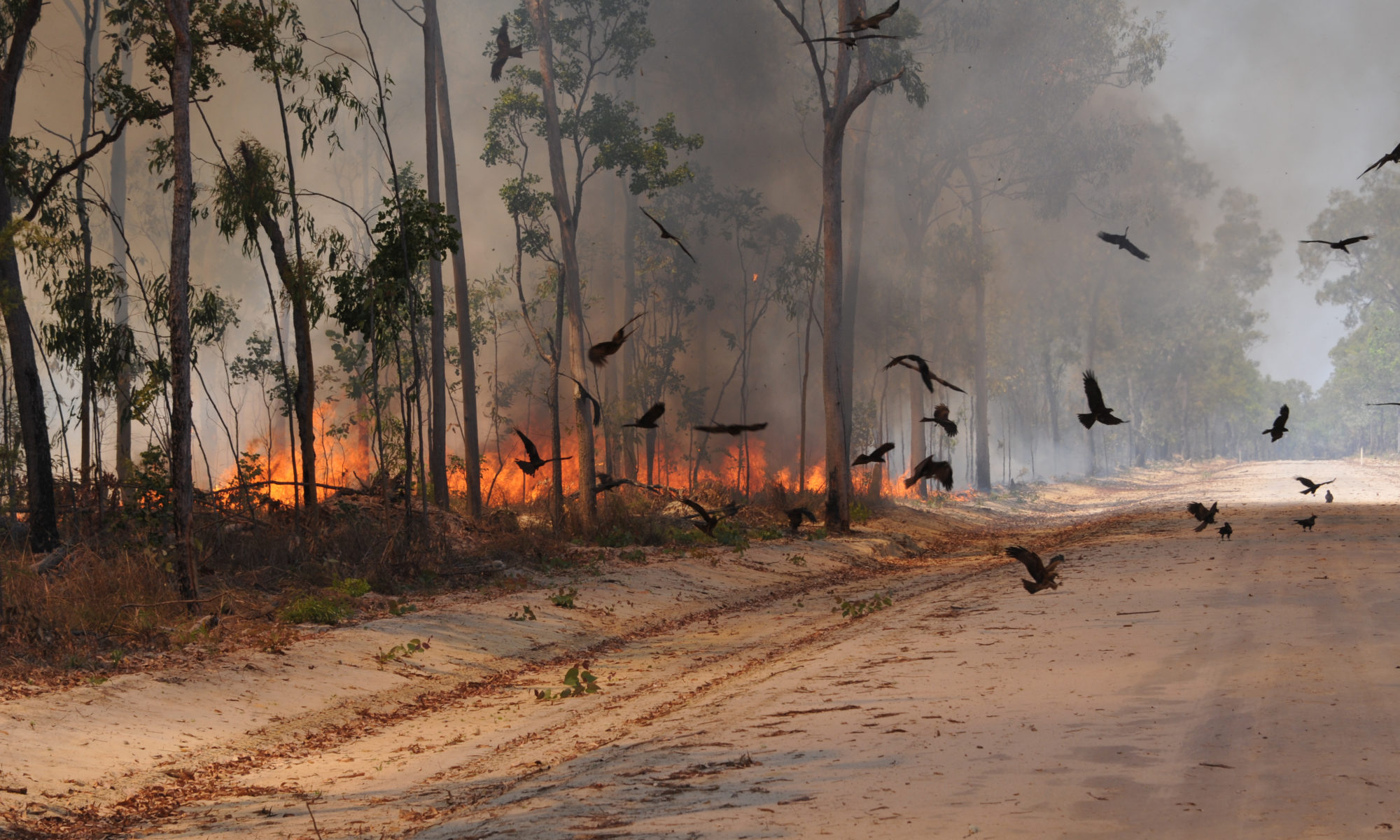- Firehawks: waking up to stories of the Dreamtime - 10/03/2018
- South Africa’s topsy-turvy seasons - 05/01/2015
- Do badgers play Friesian tag? - 29/05/2013
Fire is an essential part of the ecology of many savannah and grassland ecosystems. In some cases, fire is the only way of removing older grasses that are no longer profitable for herbivores to consume. As well as having benefits for local ecology, grassland fires also offer great feeding opportunities. I have seen large groups of raptors and insectivorous birds gather at the fringes of bushfires in Kruger National Park, to take advantage of the animals flushed into the open by the moving fire front. In Australia, a number of raptors are frequently seen around bushfires. These birds; black kites (Milvus migrans), whistling kites (Haliastur sphenurus), and brown falcons (Falco berigora) are known as firehawks. In Malamalak, an Aboriginal language, the black kite is known as Kerrk, a reference to its call “kerrk-kerrk-kerrk“.There is an intriguing story about Kerrk:
Birds carrying burning sticks. This sounds odd, if not suicidal, behaviour. Surely birds would need to protect their legs and feathers from fire damage. Yet firehawks are widely recognised by the Aboriginal peoples of Arnhem Land and other regions of the northern Australian tropical savannah, as well as by non-Aboriginal fire managers and several anthropologists. Mark Bonta (Penn State University), a ‘geophilosopher with a wide range of interests’, was determined to find additional support for the indigenous ecological knowledge of firehawks, which was frequently dismissed by scientists as anecdotal. With colleagues from the United States and Australia, he combed the literature and conducted interviews with eye-witnesses.

The results of their investigations were published recently in the Journal of Ethnobiology. The authors are in no doubt that firehawks spread fire intentionally, to provide new feeding opportunities at new fire sites. It is wonderful to have this behaviour ‘officially’ recognised, whilst also disappointing that previous sources were dismissed. Firehawks should be recognised not only as tool-users, but also landscape managers. By carrying burning sticks or embers across roads and rivers, they are spreading fires beyond both ‘natural’ and managed boundaries. The authors raise a fascinating possibility; while Aboriginal people have been using a technique referred to as ‘fire-stick farming’ for tens of thousands, they may have been inspired by the activities of firehawks.
Header photo credit: Dick Eussen (co-author of Bonta et al. 2017).
______________
About the Author
Dr. David Kelly is a postdoctoral researcher in Prof Nicola Marples’ Behavioural and Evolutionary Ecology group in the Department of Zoology, Trinity College Dublin. His interests include ecology, biogeography and evolution and their interrelatedness. Find out more about his research here:
Website | TCD Profile
Research Gate | Profile
Twitter | @dicaeum


One Reply to “Firehawks: waking up to stories of the Dreamtime”